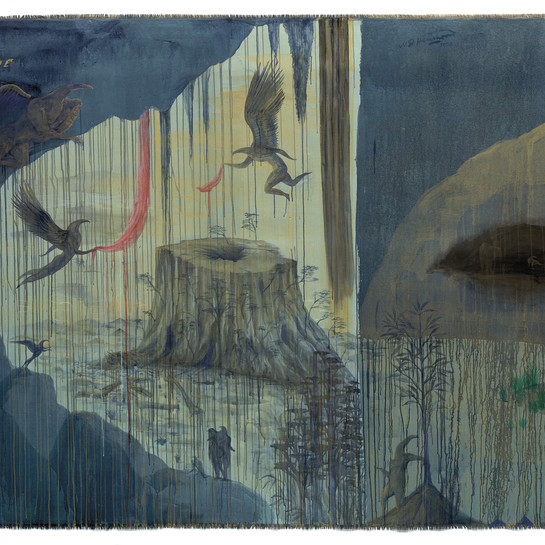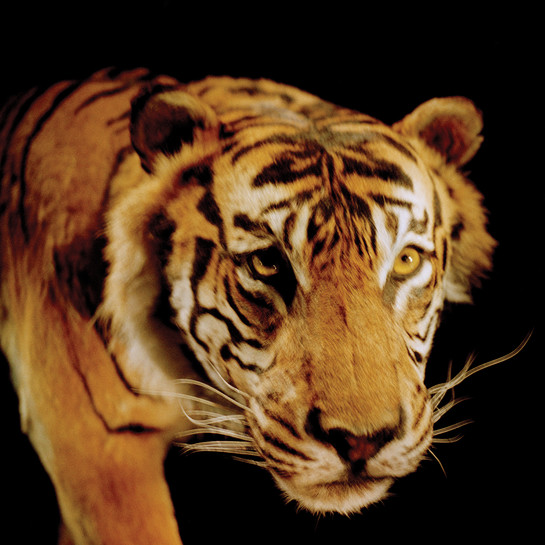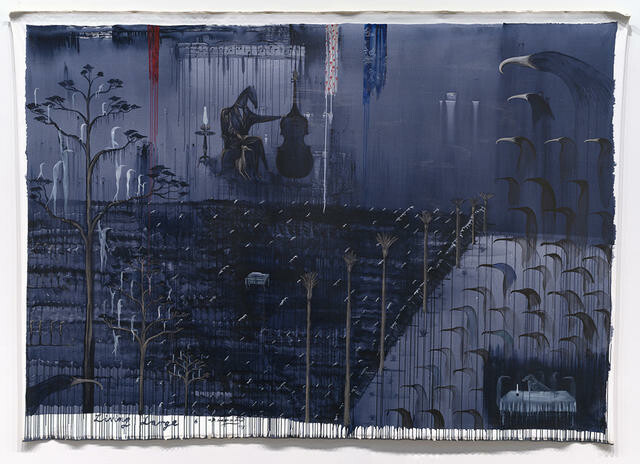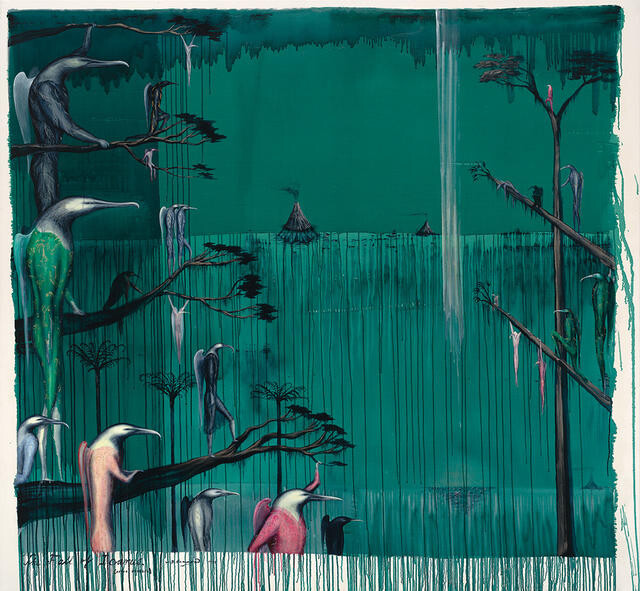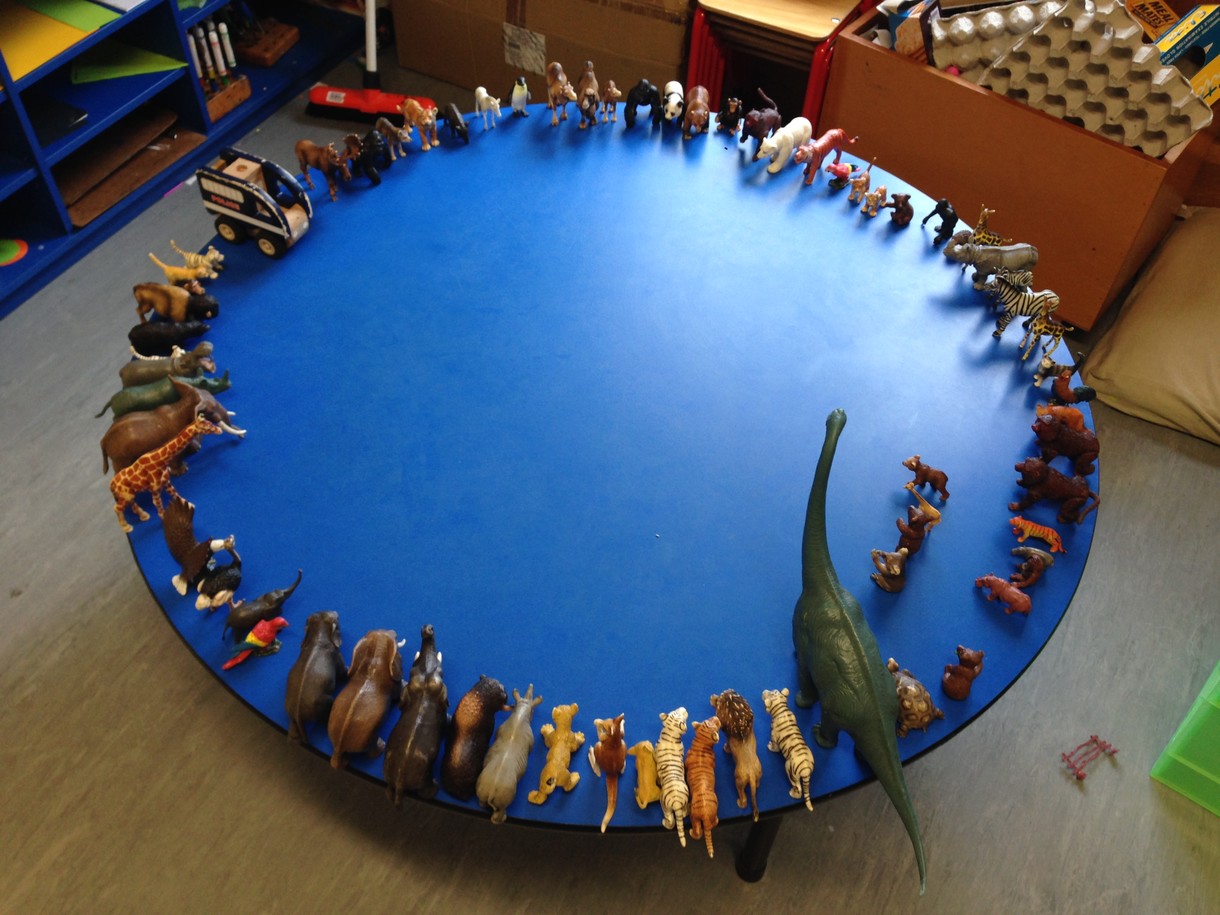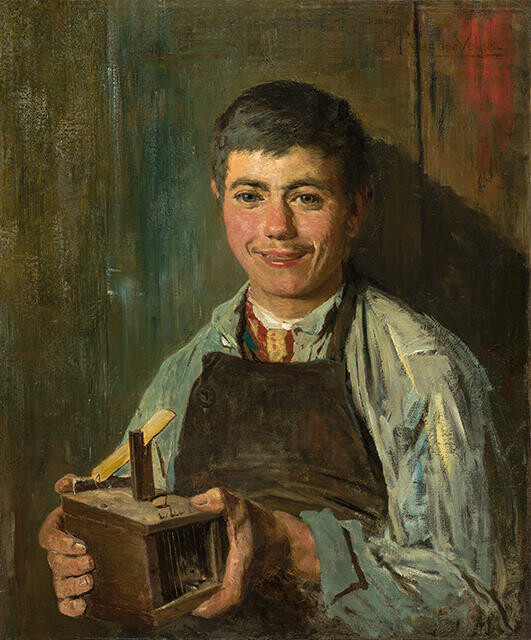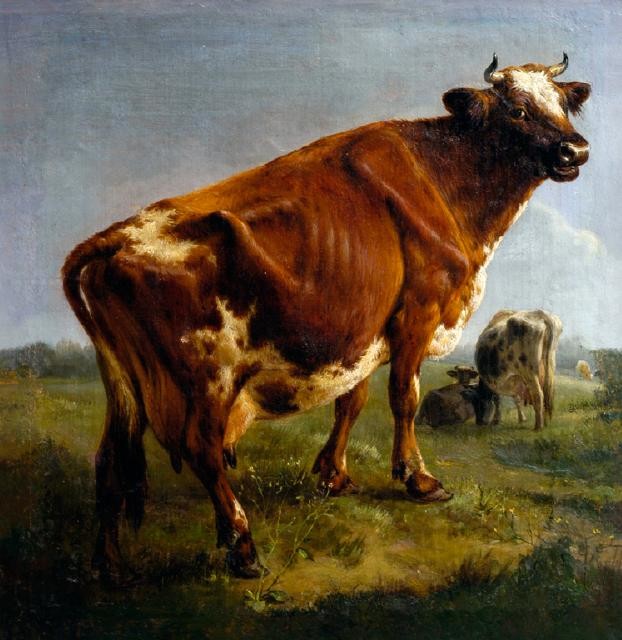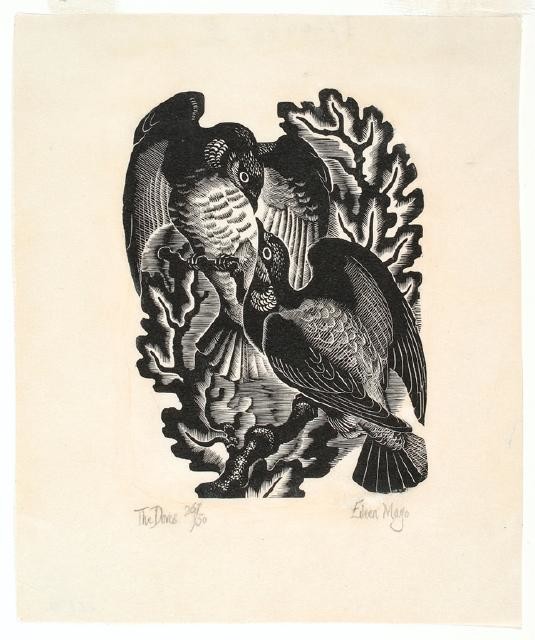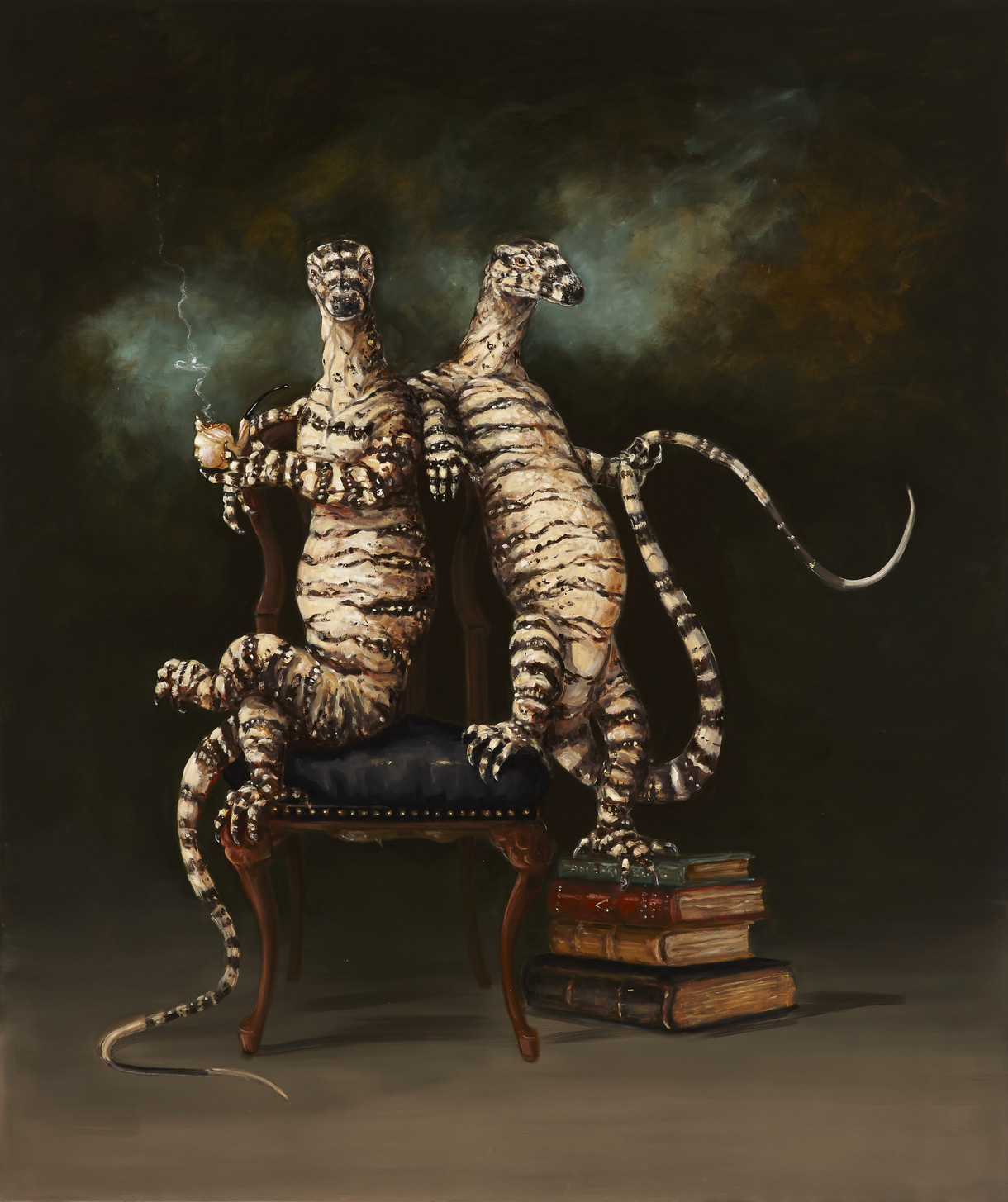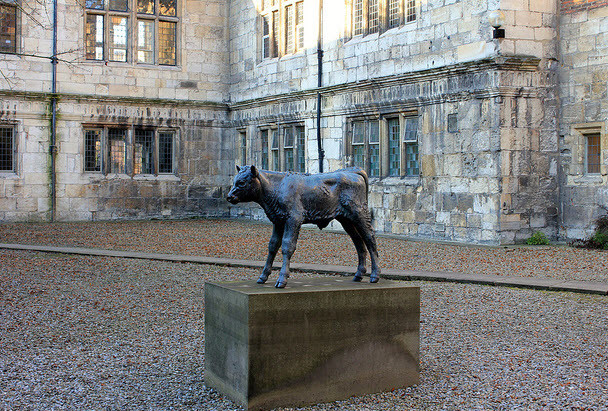Bill Hammond
Aotearoa New Zealand, b.1947, d.2021
Living Large 6
- 1995
- Acrylic on unstretched canvas
- Christchurch Art Gallery Foundation Collection, purchased 2009
- 2100 x 2940mm
- L02/2009
Tags: animals, birds (animals), double basses, drip painting, fantasy (imagination), immigration, lamps (lighting devices), musical instruments, musicians, performing artists, pianos, seas, sheet music, suits (main garments), trees
There’s no big break. It’s just a slow game. —Bill Hammond, 2002
Bill Hammond: Playing the Drums (3 August 2019 – 19 January 2020)
Exhibition History
Pale, birdlike figures look into the distance from tall trees, like so many watchers on a ship’s mast. Behind and above the windswept waves, a Victorian gentleman-horse is seated with his whippet and double bass. Watched by an assembly of shadowy birds’ heads, he remains dignified and untroubled, appearing destined for a life of ambitious success. He seems oblivious to the impact of his presence.
(Beasts, 2015)
